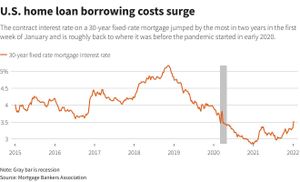The Japanese government is making significant adjustments to its pension system for the elderly, aiming to increase the economic participation of seniors amid pressing labor shortages. According to the Ministry of Health, Labour and Welfare, as of April 2026, the income limit for elderly individuals receiving welfare pensions—a barrier known as the "working elderly pension system"—will be raised from 50,000 yen to 62,000 yen.
This review of the pension system, which currently reduces benefits for individuals earning above 500,000 yen, is seen as necessary to encourage continued employment among the aging population and to mitigate labor shortages. A significant portion of Japan's workforce is aging, with about 308,000 pensioners over 65 actively participating, many of whom have been dissuaded from working or adjusting their income due to the existing cap.
Details of the plan were confirmed by government sources, indicating the necessity for modernizing the pension structure. By increasing the income limit to 62,000 yen, the government aims to remove the disincentives for elderly workers, allowing them to earn additional income without losing part of their pension benefits.
Reported by Kyodo News, the Ministry stated, "We have decided to raise the working elderly pension cap as part of our policy changes to support older workers by April 2026." This shift reflects broader demographic changes within Japan, wherein the population of senior citizens is rapidly increasing, exacerbated by low birth rates and extending life expectancies, which has put immense strain on the existing pension system.
Currently, the committee studying pension reforms has received legislative proposals anticipating adjustments to be raised during the next session of the Diet on January 24, 2024. The proposal has garnered varying responses across the political spectrum.
Kazuhiro Yamanoi from the Constitutional Democratic Party expressed cautious support, stating, "It's not absolute opposition, but there will be backlash if my pension is cut for the benefit of wealthier individuals." His statement reflects the concerns within the political circles about the ramifications of the proposed changes on both social equity and the benefits allocation for lower-income pensioners.
Critics of the existing pension system argue it inadvertently discourages work among seniors, with many adjusting their employment status or hours to avoid exceeding the income limit. Statistics show approximately 16% of working pensioners have faced benefit reductions, losing out on nearly 4.5 billion yen annually due to these stringent rules.
This upcoming reform is poised to have far-reaching consequences, both socially and economically. By enhancing the limits for what seniors can earn without penalty, the government anticipates higher participation rates among older individuals, contributing positively to their financial well-being and possibly alleviating labor shortages across various sectors.
Experts assert the importance of keeping the elderly engaged and economically active, emphasizing the experience and skills they bring to the labor market. Proponents of these changes suggest such reforms not only contribute to economic vitality but also honor the dignity and capabilities of older citizens.
With rising concerns over pension sustainability as the workforce demographics shift, these legislative changes could mark the beginning of transformative policies aimed at equipping senior citizens to fully participate and thrive economically within society. While challenges remain, the initiative has the potential to serve as a model for aging nations grappling with similar issues of labor shortages and pension sustainability.
Looking forward, the government is expected to closely monitor and measure the impact of these changes on both the economy and the lives of senior citizens, preparing for more modifications to keep pace with Japan's changing demographics and labor market landscapes.



